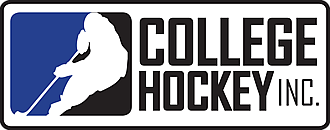


This article originally appeared in the Dec. 5, 2015, edition of The Hockey News. Find it and an entire four-page section devoted to NCAA hockey here (.pdf).
The exploits of players like Johnny Gaudreau, Mats Zuccarello and Tyler Johnson in the NHL are proving that now, more than ever, you don’t need size to stand out in a crowd of NHL players.
NCAA hockey doesn’t produce all of these players – Johnson, for example, played in the WHL and Zuccarello developed in Europe. But the numbers show that U.S. college hockey develops a disproportionate number of undersized NHLers, like Calder Trophy finalist and NHL All-Star Gaudreau out of Boston College.
NCAA Player Development | In the NHL
While 30% of all NHL players played college hockey, that number rises to 34.8% when looking at players under 6-foot tall (see graphic). The smaller the player, the bigger the NCAA influence – nearly half (48.6%) of NHL players under 5-foot-10 played college hockey.
NCAA schools have a history of producing NHL talent that fits that bill, from Adam Oates (Rensselaer) to Martin St. Louis (Vermont) and beyond.
A big reason is the development those players enjoy while on campus. Four years of eligibility allows them to mature until 22 or 23 – and the vast majority remain on campus for three or four years. The NCAA schedule allows time for strength and conditioning, so they can add muscle to their smaller frames. And the practice-to-game ratio allows them to work on their individual skills.
'What college hockey offers'
“There’s less clutching and grabbing and there are now, I think, more opportunity for smaller players and skill players and late developers,” said Bowling Green alumnus Dan Bylsma, head coach of the Buffalo Sabres. “That’s really kind of what college hockey offers you as a developing hockey player. Instead of being 18 when you’re drafted and trying to fend for yourself, you’re 21-22 and turning pro at that point in time.”
These advantages may be most evident on defense, where NCAA hockey has developed small, skilled blueliners like Torey Krug (Michigan State), Kevin Shattenkirk (Boston University) and Dan Boyle (Miami).
A total of 66 defensemen under 6-foot tall have appeared in the NHL since 2010. Forty-eight percent of those played NCAA hockey, and every single one stayed in school at least three years.
College hockey isn’t just a small man’s game – in fact, 45% of NHLers 6-foot-6 or taller in 2014-15 played college hockey as well. But was smaller players make NHL headlines and earn more opportunities like Gaudreau’s, the NCAA will continue to develop that talent for the next level.